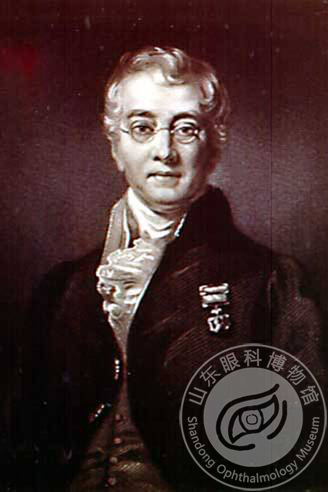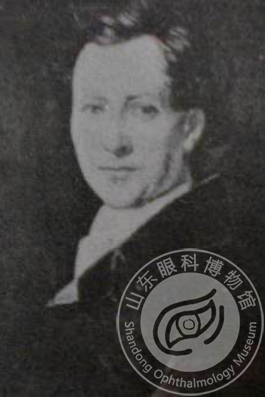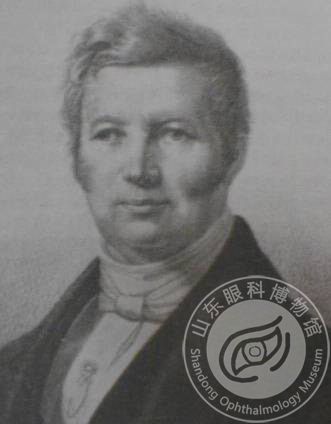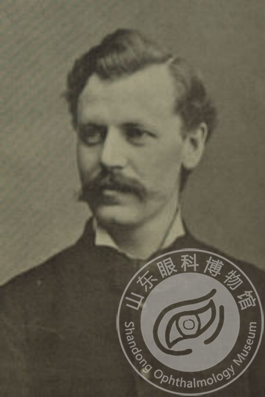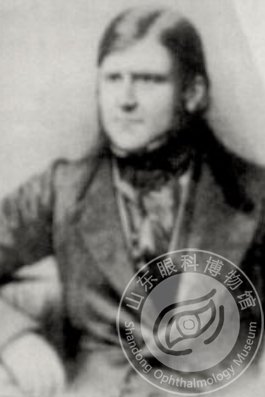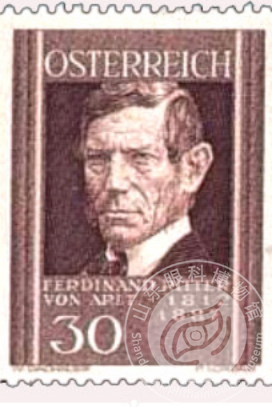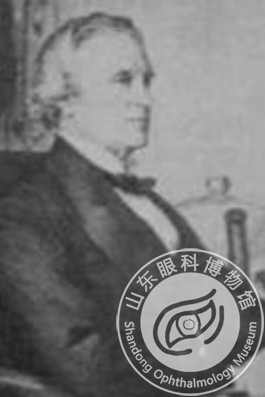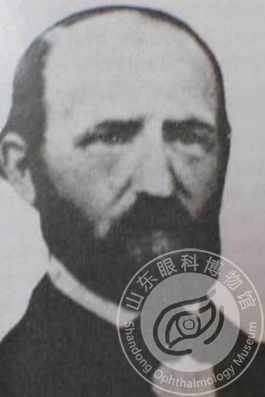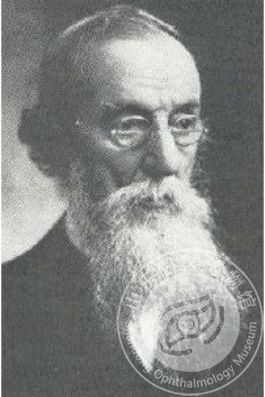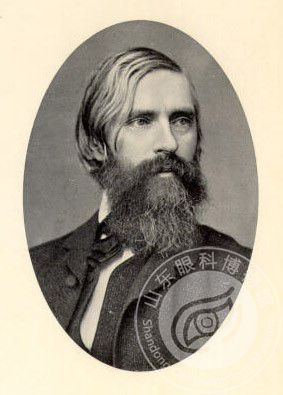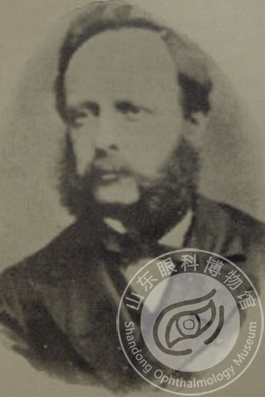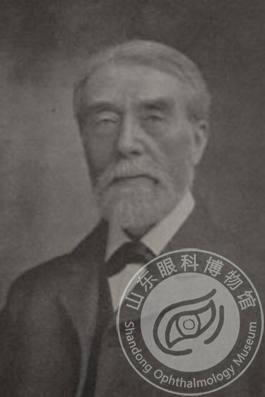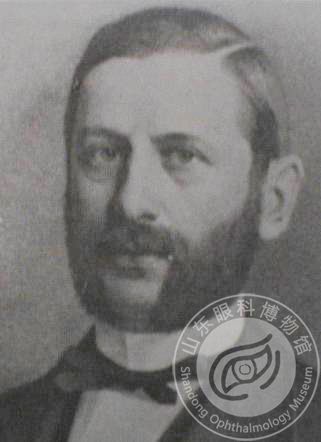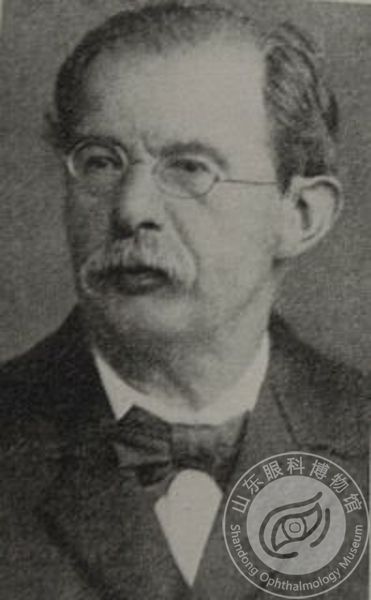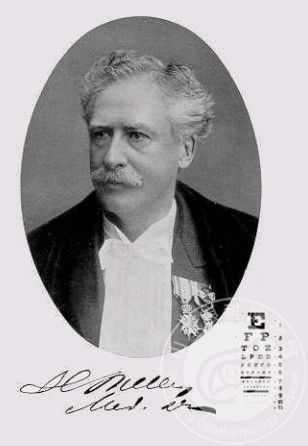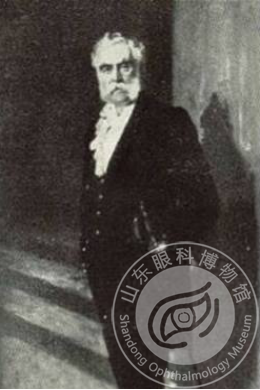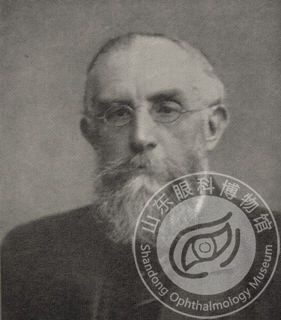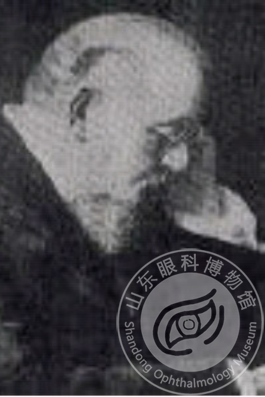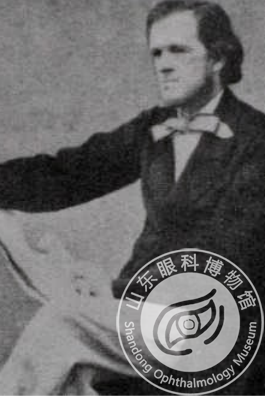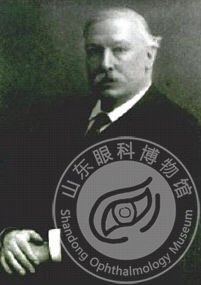生卒年月 1774/11/01 - 1842/04/28
Scottish anatomist, surgeon and physiologist, born in November 1774; died on April 28, 1842 in North Harlow, Worcestershire. In England, he was considered the most important doctor and scientist at the time. During his visit to Paris, Professor Roux ended his speech with the words “C'est assez, Messieurs, vous avez vu Charles Bell”. There was a fascinating flash behind his glasses, he was very kind and unaffected. Famous doctors from all over the world came to visit him in London, and his travel abroad became a parade of victory. He received many honors, including the spirit of the Cavaliers, awarded by the lord Henry Peter Bloomham (1778-1868).
Bell's palsy: Peripheral, usually unilateral, facial nerve idiopathic paralysis.
生卒年月 1790/01/01 - 1883/01/01
An anatomist in Paris; born in 1790 and died in 1883. Jules Germain Cloquet is the younger brother of Hippolyte Cloquet (1787-1840). He was originally an apprentice in his father's studio. He was a draftsman and later became a model for the anatomical figures of Paris teachers. He first studied natural sciences in Rouen, but came to Paris in 1810 to work on medicine.
Cloquet reformed theoretical education by using pictures and preparing for reform. His lecture was collected and published by Dominique-Jean Baron Larrey (1766-1842). In addition to numerous papers on surgery and anatomy, Cloquet is also considered to be the invention of several surgical instruments, including arterial forceps and devices for removing foreign objects.
Cloquet's tube: the residue of the embryo.
生卒年月 1795/01/01 - 1858/01/01
Professor of anatomy at the Universityof Berlin; born 1795-1858
Schlemm's canal. .
生卒年月 1797/01/01 - 1868/01/01
Krause (1797-1868), German anatomist. He received his doctorate in medicine from the University of Göttingen in 1818 and later received his anatomy chair at the School of Surgery in Hannover. His son Wilhelm Krause (1833-1910) is also an anatomist. Klaus was one of the first anatomists to use the microscope extensively. He was the first doctor to describe the perineal transverse ligament and described the accessory lacrimal gland of the eye.
Krause's glands: An accessory gland under the eyelid that meets the lower eyelid and upper eyelid.
Krause's ligament: Perineal transverse ligament.
生卒年月 1803/01/01 - 1852/05/02
British ophthalmologist, born in 1803, Norwich; May 2, 1852, died in London. John Dalrymple is the eldest son of Norwich's famous surgeon, William Dalrymple (1772-1847). He accepted his father's first medical education before entering the University of Edinburgh and graduated in medicine in 1827.
Dalrymple contributed to the ophthalmology literature in two large works published in 1834 and 1852. John Dalrymple played an important role in discovering the albumin now known as the Bence Jones protein. See Henry Bence Jones, British physician and chemist, 1813-1873.
Signs of Dalrymple: Hyperthyroidism (Barcelone's disease) when the eyelids widen or the eyelids, resulting in an abnormal width of the cleft palate.
生卒年月 1812/04/18 - 1887/03/07
German ophthalmologist, born on April 18, 1812, Obergraupen near Teplitz, Bohemia; died on March 7, 1887. He received ophthalmology training from Professor Johann Nepomuk Fischer (1777-1847), founder of modern ophthalmology medicine in Bohemia, and received his doctorate in medicine in Prague in 1839. From October 1846 to July 1849, he served as the chairman's supplement. Ophthalmology in Prague, August 1849 to July 1856, Professor of Ophthalmology in Prague.
At the beginning of his large-scale work on eye diseases, Arlt began his career at an early stage and in 1855 collaborated with Franz Cornelis Donders (1818-1889) to become a co-editor of Archivfür Ophthalmologie magazine.
生卒年月 1816/07/20 - 1892/03/29
Bowman, the 1st Baron (July 20, 1816 - March 29, 1892) was a British surgeon, histologist and anatomist. He is best known for his research on various human organs using microscopes, but during his lifetime he pursued a successful career as an ophthalmologist. Bowman's earliest remarkable work was on the structure of the striated muscle. To this end, he was selected as an academician of the Royal Society in 1841. After completing his surgical training in 1844, Bowman practiced as an ophthalmologist at the Royal London Eye Hospital (after the Murphy Eye Hospital). In 1880, he founded the "Ophthalmology Society" and later became the Royal Academy of Ophthalmology.
Bowman Pouch, his name is named Anatomy.
生卒年月 1820/01/01 - 1864/01/01
Müller (1820 - 1864), German physiologist and anatomist. In 1851, Müller noticed the red color in rod cells, now known as rhodopsin or rhodopsin, a pigment present in retinal rod cells. He also described glial cell fibers that make up the retinal support frame, a structure known as "Müller fiber." In 1856, together with his colleague Albert von Korric (1817-1905), he stated that the frog's heart would produce electricity every time it contracted. Since 1858 he has been a full professor at the University of Würzburg. As a lecturer, he also teaches system anatomy, histology and microscopy.
Müller's muscle: The round part of the ciliary muscle of the eye. After the French physiologist Charles Marie Benjamin Rukit (1824-1904), it was also known as "Rouget Muscle". Sometimes referred to as "Müller-Rouget Muscle" to commemorate these two people.
生卒年月 1828/01/01 - 1913/01/01
Sir Hutchinson (1828-1913), British ophthalmologist and surgeon, syphilis specialist, neurologist, and a writer and teacher.
Hutchinson's contribution to the surgical profession and the advancement of natural science research is amazing. He has published more than 1,200 medical articles, which have strong observational effects on gout, leprosy and other diseases, and the pathogenesis of neuropathy. He is also an expert in syphilis. He also opened an educational museum for natural history education in his hometown of Selby. In 1908, he won the British Knight Medal.
Hutchinson's sign: notched incisors, labyrinth deafness and interstitial keratitis.
生卒年月 1828/03/22 - 1870/07/20
German ophthalmologist, born on May 22, 1828, in finkenhal, Berlin, Germany (mark Brandenburg);He died in Berlin on July 20, 1870.Graefe's sign: when a patient's gaze changes from looking up to looking down, the upper eyelid cannot follow the eye downward.Graefe's knife: a historically significant knife for cataract extraction.
生卒年月 1829/01/01 - 1870/01/01
Dr.Laurence (1829 - 1870), Ph.D., British ophthalmologist. In 1857 he became the founder of the South London Eye Hospital and later known as the Royal Eye Clinic. In 1864, he became the founder and editor of the "Ophthalmic Review" magazine, the first journal in the UK dedicated to ophthalmology. At the same time, he was praised for promoting the use of ophthalmoscopes in the UK. In 1866, along with his colleague Robert Charles Moon, a very rare complication of retinitis pigmentosa syndrome was described.
Laurence-Moon Syndrome: Loss of vision leads to blindness, mental retardation, short stature and hypogonadism.
生卒年月 1832/01/01 - 1911/01/01
Knapp (1832- 1911), German-American ophthalmologist and otolaryngologist. Born in Germany, immigrated to New York.
Knapp's Rule: A lens placed at the front of the eye (usually 15 mm in front of the eye), as long as the difference between the two eyes is due to the difference in length of the eye axis, a similar size will be produced on the retina. image. This is important for correcting refractive errors with the glasses. But there is some controversy about the soundness of the Knapp rule.
生卒年月 1833/01/01 - 1890/01/01
Berlin neuroanatomist and psychiatrist born in 1833 died in 1890.Karl friedrich otto westphal was a renowned physician and private medical consultant.From 1851, he studied in Berlin, Heidelberg and Zurich, and received his doctorate in Vienna and Paris.In 1857 westphal became assistant to the charite smallpox branch in Berlin.A year later, he moved to the department of mental disorders as an assistant doctor.In 1861, he was appointed professor of psychiatry at the university of Berlin.In 1868, westphal became head of smallpox and internal medicine.A year later, in 1869, he was appointed distinguished professor of psychiatry, chief physician and clinical teacher of the department of psychiatry and neurological diseases, and full professor of psychiatry in 1874.Edinger-Westphal nucleus: parasympathetic nucleus of the third oculomotor nerve.
生卒年月 1833/12/02 - 1910/08/26
German pathologist, born on December 2, 1833, west fallon gutterlow;He died in Strasbourg on August 26, 1910.Friedrich Daniel von Recklinghausen studied medicine in Bonn from 1852 to 1855, and received his m.d. in wurzburg and Berlin in 1855 at the age of 22.In 1865 he was appointed professor of pathological anatomy at konigsberg from 1866 to 1872, he was professor at the university of wurzburg, and finally, from 1872 to 1906, he taught at the university of Strasbourg.He became President of the university in 1877 and was an active researcher and teacher until shortly before his death in 1910.Neurofibroma: genetic disease characterized by coffee milk spots associated with various peripheral nerve tumors, as well as various abnormal hyperplasia of skin, nervous system, bone and endocrine organs.
生卒年月 1834/02/19 - 1908/01/18
Dutch ophthalmologist, born 19th February, 1834, Zeist (Utrecht); died 18th January, 1908.
Snellen's charts = Chart printed with lines of black letters used for testing visual acuity.
生卒年月 1837/01/01 - 1909/01/03
Scottish ophthalmologist, born in 1837, Edinburgh; on January 3, 1909, Gonday near Mumbai, India died. Douglas Moray Cooper Lamb Argyll Robertson was one of the first surgeons to focus entirely on the ophthalmology field, and his name was always associated with the phenomenon he described in his pupil in his back. Graefe's scalpel: Designed for cataract extraction, it is now historic.
Argyll Robertson Syndrome: A common symptom of neurosyphilis, particularly back pain, and other diseases of the central nervous system where the pupil is small and slow or not responding at all, but retains response to regulation and convergence.
生卒年月 1843/01/01 - 1927/05/15
British ophthalmologist and surgeon, born 1843;Died on May 15, 1927, in Croydon.Warren Tay, from Yorkshire, studied medicine at a London hospital.In 1868, he was appointed assistant surgeon at the blackfriars hospital of dermatology, where he remained until 1907.He also had a job at the north eastern Hospital for Children in hackney road, now Queen's Hospital for Children.In 1869 he became a member of the royal college of surgeons and was appointed assistant surgeon and ophthalmologist at the London hospital.Tay-Sachs disease = an autosomal recessive lysosomal disease characterized by retinal cherry red spots, neuronal degeneration, and usually early death before age 3.
生卒年月 1844/01/01 - 1914/01/01
Robert Moon (1844-1914), an ophthalmologist working in medicine in the United Kingdom and the United States. He is the son of Dr. William Moon (1818-1894), the inventor of the blind embossed letter "moon type".
Robert Moon's career choices in ophthalmology were influenced by his youthful experience of helping his father translate and copy reading materials for the visually impaired. From 1866 to 1878, he practiced at the South London Eye Hospital, which was founded in 1857 by Dr. Laurence (1829-1870). Together with Dr. Lawrence, he named a disease characterized by retinitis pigmentosa and a variety of other symptoms.
Laurence-Moon Syndrome: Loss of vision leads to blindness, mental retardation, short stature and hypogonadism.
生卒年月 1849/01/01 - 1984/01/01
German anatomist. Born in Mainz in 1849, he became a lecturer at the University of Heidelberg School of Medicine in 1845. He died in 1984.
Bruch membrane: refers to a thin film-like structure between the choroidal capillary layer and the pigment epithelium of the retina. Because the first is described by Bruch, hence the name.
生卒年月 1850/01/01 - 1919/01/01
British physician, born 1850, died 1919.In 1865, he was sent to a Quaker school in London.William entered Bristol medical school in 1868.He received his doctor of medicine in London in 1875.After serving as a physician's assistant, he became a resident and later registrar of the national hospital for paralysis and epilepsy.It was there that he laid the groundwork for an extensive and thorough investigation of neurological diseases.Sturg-weber syndrome: congenital disorder characterized by facial wine spots with intellectual disabilities and epilepsy.The incidence of glaucoma is high due to increased scleral pressure.
